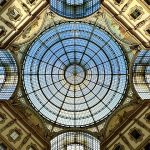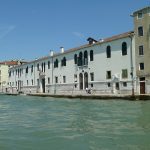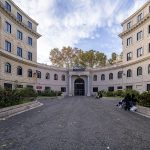
The Accademia di Belle Arti di Firenze stands as one of the most prestigious art institutions in Italy, embodying centuries of artistic tradition and innovation. Nestled in the heart of Florence, this venerable academy has played a pivotal role in shaping Western art and preserving the Renaissance spirit. Over the years, it has nurtured generations of artists, leaving an indelible mark on global culture. This article delves into the history, notable figures, and cultural significance of the Accademia, offering a comprehensive look at its enduring legacy.
The Origins of the Accademia di Belle Arti di Firenze
Founded in 1563 by Cosimo I de’ Medici, the Accademia di Belle Arti di Firenze emerged as a beacon of artistic excellence. The academy’s creation was heavily influenced by Giorgio Vasari, a renowned artist and architect, who envisioned an institution that blended education with the preservation of artistic heritage. Initially called the Accademia e Compagnia delle Arti del Disegno, it served both as a school and a guild for artists. This dual function highlighted Florence’s commitment to fostering creativity and maintaining its status as a cultural capital.
The academy was deeply intertwined with the Medici family, whose patronage was instrumental in its foundation. Cosimo I sought to centralize artistic endeavors, ensuring that Florence retained its dominance during the Renaissance. The academy’s early curriculum was rooted in Renaissance ideals, emphasizing disciplines such as drawing, sculpture, and architecture. Vasari’s influence ensured that these teachings aligned with the era’s intellectual and aesthetic aspirations, solidifying the institution’s reputation.
In its formative years, the Accademia attracted a diverse array of talent, ranging from apprentices to established masters. These individuals contributed to a rich exchange of ideas, further elevating the institution’s prestige. The academy’s focus on collaboration and innovation set it apart from other European schools of the time. This dynamic environment helped forge a legacy that continues to inspire artists worldwide.
As the Renaissance waned, the Accademia adapted, preserving its relevance by incorporating new techniques and ideas. The institution’s resilience underscored its foundational mission: to balance tradition with progress. This adaptability ensured that the academy remained a cornerstone of Florence’s artistic identity, even as the city evolved over the centuries.
Notable Figures in the Accademia’s History
The history of the Accademia di Belle Arti is illuminated by the contributions of extraordinary individuals who shaped its character. Giorgio Vasari, co-founder and visionary, was instrumental in establishing the academy’s pedagogical framework. Vasari’s artistic expertise and historical writings, including Lives of the Most Excellent Painters, Sculptors, and Architects, became a cornerstone of Renaissance art theory. His emphasis on the study of classical works laid a foundation that continues to influence the academy’s philosophy.
Michelangelo Buonarroti, though not directly affiliated as a student, profoundly influenced the Accademia’s ethos. His works, particularly David, became emblematic of the institution’s artistic aspirations. Michelangelo’s legacy permeated the Accademia’s teachings, emphasizing the mastery of anatomy, expression, and technique. Generations of students looked to his sculptures as the pinnacle of artistic achievement.
The 19th century brought luminaries such as Lorenzo Bartolini, a celebrated sculptor who advanced the Romantic style. As a professor at the Accademia, Bartolini emphasized naturalism and emotional resonance, departing from rigid classical conventions. His teachings inspired a new wave of artists, including Giovanni Fattori, a leading figure in the Macchiaioli movement. Fattori’s innovative approach to light and color would later influence Impressionism, demonstrating the Accademia’s global impact.
Alumni of the Accademia include some of the most celebrated names in art history. Figures like Carlo Levi and Marino Marini exemplify the institution’s far-reaching influence. Their careers spanned painting, sculpture, and literature, reflecting the Accademia’s commitment to fostering multifaceted creativity. These artists carried the academy’s legacy beyond Florence, cementing its reputation as a world-class institution.
The Galleria dell’Accademia and Its Art Collections
The Galleria dell’Accademia, a museum closely associated with the academy, is home to some of the most iconic works of art. Established in 1784 by Grand Duke Pietro Leopoldo, it was initially designed to support the education of students. Today, it draws millions of visitors annually, serving as both a repository of artistic treasures and a source of inspiration. Its most famous resident, Michelangelo’s David, stands as a testament to the brilliance of Renaissance sculpture.
Michelangelo’s David, completed in 1504, is a symbol of Florentine identity and artistic mastery. The statue, originally intended for Florence Cathedral, found its permanent home at the Galleria in 1873. Visitors can admire every detail of this masterpiece, from its lifelike musculature to its powerful expression. Its presence at the museum reinforces the Accademia’s connection to Florence’s artistic heritage.
Beyond David, the Galleria boasts an impressive collection of Renaissance art. Highlights include works by Sandro Botticelli, Domenico Ghirlandaio, and Andrea del Sarto. These paintings, alongside an extensive collection of plaster casts, provide a comprehensive view of artistic development during the Renaissance. The museum’s careful curation ensures that visitors gain a deeper understanding of the era’s cultural and aesthetic values.
The Galleria’s role extends beyond preservation; it actively engages with contemporary audiences through exhibitions and educational programs. These initiatives reflect the Accademia’s commitment to fostering appreciation for art in all its forms. By blending tradition with innovation, the Galleria remains a vital cultural institution within Florence and beyond.
The Accademia’s Role in Modern Art Education
The Accademia di Belle Arti di Firenze continues to uphold its mission of fostering artistic excellence in the modern era. Its curriculum combines classical techniques with contemporary practices, ensuring students receive a well-rounded education. Courses in painting, sculpture, and digital media reflect the evolving demands of the art world. This dynamic approach prepares graduates to succeed in both traditional and innovative artistic fields.
International collaborations have become a cornerstone of the Accademia’s educational philosophy. Partnerships with institutions across Europe, Asia, and the Americas enable cultural exchange and broaden students’ horizons. These collaborations often include joint exhibitions, workshops, and research projects, fostering a global perspective. By connecting with international art communities, the Accademia reinforces its position as a leader in modern art education.
The faculty at the Accademia consists of renowned artists and scholars who bring diverse expertise to their teaching. Professors emphasize critical thinking and experimentation, encouraging students to develop unique artistic voices. This mentorship fosters creativity while grounding students in technical proficiency. Graduates leave the Accademia equipped with the skills and confidence to navigate the complexities of the contemporary art world.
Despite its embrace of modernity, the Accademia remains deeply rooted in its Renaissance heritage. Students are encouraged to study classical works, drawing inspiration from Florence’s rich artistic history. This blend of tradition and innovation defines the Accademia’s educational model, ensuring that its legacy endures for generations to come.
Architectural and Historical Significance of the Building
The Accademia’s premises are a testament to Florence’s architectural and cultural heritage. Originally part of a 14th-century hospital, the building was repurposed to house the academy in the 18th century. Its historic facade and interior spaces reflect the city’s commitment to preserving its artistic landmarks. Walking through the halls, one can sense the layers of history embedded within its walls.
Florence itself plays a significant role in the Accademia’s story, serving as a living classroom for students. The city’s iconic landmarks, from the Duomo to the Uffizi Gallery, provide unparalleled opportunities for artistic study. The academy’s location fosters a unique synergy between education and inspiration. Students are immersed in an environment that breathes art and culture, enhancing their learning experience.
Over the years, the Accademia has undergone renovations to accommodate modern needs while respecting its historical character. Updates have included the addition of state-of-the-art studios and galleries, seamlessly integrated into the original structure. These improvements ensure that the building remains a functional and inspiring space for both students and visitors. Preservation efforts highlight the academy’s dedication to balancing history with progress.
The building’s significance extends beyond its function as an educational institution. It stands as a symbol of Florence’s enduring legacy as a center of artistic excellence. The Accademia’s physical presence, steeped in history, embodies the city’s commitment to nurturing creativity and preserving cultural heritage.
Cultural and Artistic Legacy of the Accademia
The Accademia di Belle Arti di Firenze has left an indelible mark on the world of art and culture. Its influence on the Renaissance, one of the most transformative periods in history, is particularly noteworthy. The academy played a pivotal role in defining the artistic ideals that shaped European art for centuries. By fostering talent and innovation, it cemented Florence’s reputation as the cradle of the Renaissance.
The Accademia’s contributions extend beyond the Renaissance, influencing subsequent art movements and schools of thought. Its emphasis on technique and creativity laid the groundwork for styles like Baroque, Neoclassicism, and Romanticism. The academy’s alumni and faculty often spearheaded these movements, driving artistic evolution. This legacy underscores the Accademia’s role as a cultural powerhouse.
Florence’s identity as a cultural capital owes much to the Accademia’s presence. The institution has been instrumental in preserving and promoting the city’s artistic heritage. From housing priceless works to educating future generations, the Accademia ensures that Florence remains a global hub of creativity. This symbiotic relationship between city and institution amplifies their collective impact on the arts.
The global influence of the Accademia is evident in the countless artists and scholars who have passed through its doors. Its teachings and traditions have been exported worldwide, shaping art education and practice in diverse contexts. The Accademia’s enduring legacy continues to inspire and elevate the global artistic community.
Visiting the Accademia Today
For art enthusiasts and travelers, visiting the Accademia di Belle Arti di Firenze is a must. Located in the heart of Florence, the institution offers a unique blend of history, culture, and inspiration. Visitors can explore the Galleria dell’Accademia, marveling at masterpieces like Michelangelo’s David. The experience provides an intimate look at Florence’s rich artistic heritage.
Guided tours offer in-depth insights into the Accademia’s history and collections. These tours often include expert commentary on the works displayed, enriching the visitor experience. Special exhibitions and events provide additional opportunities to engage with the institution’s offerings. From classical art to contemporary installations, there is something for everyone to enjoy.
Accessibility is a key consideration for the Accademia, with facilities designed to accommodate diverse needs. Tickets can be purchased online, allowing visitors to plan their trips conveniently. The surrounding area, filled with cafes, shops, and historic landmarks, makes for an unforgettable cultural outing. A visit to the Accademia is more than a sightseeing activity; it is a journey through the heart of Italian art.
To make the most of their visit, tourists should allocate time to explore nearby attractions. The Accademia’s central location makes it easy to visit the Duomo, Piazza della Signoria, and other iconic sites. Combining these experiences creates a well-rounded itinerary that showcases the best of Florence. A day spent at the Accademia and its surroundings is a celebration of art, history, and culture.
Key Takeaways
- The Accademia di Belle Arti di Firenze was founded in 1563 by Cosimo I de’ Medici and Giorgio Vasari.
- It played a key role in shaping the Renaissance and subsequent art movements.
- Notable figures like Michelangelo and Giovanni Fattori are tied to its legacy.
- The Galleria dell’Accademia houses masterpieces like Michelangelo’s David.
- The Accademia continues to blend tradition and innovation in modern art education.
FAQs
1. When was the Accademia di Belle Arti di Firenze founded?
1563, under the patronage of Cosimo I de’ Medici and Giorgio Vasari.
2. What is the significance of Michelangelo’s David?
It symbolizes artistic mastery and is a centerpiece of the Galleria dell’Accademia.
3. What programs does the Accademia offer today?
It offers courses in painting, sculpture, and multimedia art, blending classical and contemporary techniques.
4. Where is the Accademia located?
In Florence, Italy, near landmarks like the Duomo and Piazza della Signoria.
5. Can visitors access the Accademia’s collections?
Yes, the Galleria dell’Accademia is open to the public, showcasing world-renowned masterpieces.




